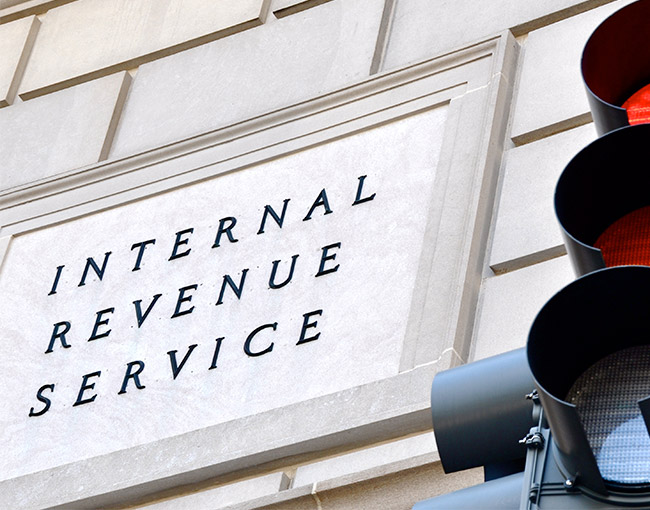Home > Insights > Publications > IRS clarifies legislative changes to the employee retention tax credit
In response to uncertainty about the implementation of the employee retention tax credit ( the “ERTC”) following a variety of revisions to the ERTC since its creation under the Coronavirus Aid, Relief, and Economic Security Act, the Internal Revenue Service (“IRS”) issued Notice 2021-20 providing guidance regarding the ERTC. Importantly, despite the fact that the ERTC, as modified by the Taxpayer Certainty and Disaster Tax Relief Act (the “Relief Act”), applies to wages paid after March 12, 2020, and before January 1, 2021, as well as wages paid on or after January 1, 2021, Notice 2021-20 applies only to ERTCs applicable to wages paid after March 12, 2020, and before January 1, 2021. The IRS indicates that it will provide separate guidance for ERTCs applicable to wages paid after January 1, 2021.
Background of the ERTC
The ERTC enacted under the CARES Act provided a tax credit equal to 50% of the “qualified wages” paid to an employee up to $10,000 per calendar quarter. Under the CARES Act, businesses were only eligible for the ERTC if they were an “eligible employer,” meaning that such business either (i) was required by a governmental authority to fully or partially suspend its trade or business because of COVID-19 or (ii) experienced a significant decline in gross receipts, which was defined as decline of greater than 50% in any 2020 calendar quarter as compared to the same calendar quarter in 2019.
In the months following the creation of the ERTC under the CARES Act, the IRS published and regularly updated guidance related to the ERTC in the form of FAQs published on the IRS website. However, those FAQs have not yet been updated to reflect the most recent changes to the ERTC and the FAQs were not binding.
As we have previously discussed, the Relief Act amended the ERTC. Specifically, the Relief Act modified the ERTC in the following four key ways:
- It extended the ERTC for “qualified wages” paid on or after January 1, 2021 until June 30, 2021.
- The amount of credit was increased to 70% of “qualified wages” paid to an employee up to $10,000 per calendar quarter.
- The threshold for the decline in gross receipts to qualify as an “eligible employer” was reduced to 20% from 50%.
- It allow businesses to claim both the ERTC and receive a Paycheck Protection Program (“PPP”) loan as provided for in the CARES Act.
Due to the several changes to the operation of the ERTC contained in various pieces of legislations, IRS FAQs, and other IRS publications, the IRS issued the Notice 2021-20 to synthesize and consolidate into one location the current rules related to the operation of the ERTC.
Clarification provided in Notice 2021-20
Rather than providing new legal authority, Notice 2021-20, which is binding on the IRS unlike the FAQs, summarizes existing legal authority and provides guidance in a question and answer format on the operation of the ERTC as it relates to wages paid after March 12, 2020, and before January 2, 2021. The following guidance provided in Notice 2021-20 differs from existing IRS FAQs:
- It clarifies that an employer that received a PPP loan may claim the ERTC for any “qualified wages” if the employer is an “eligible employer” that meets the requirements for the ERTC, although the same wages cannot be counted for both the PPP loan and ERTC.
- It provides that an eligible employer may elect not to take certain qualified wages into account for purposes of the ERTC by not claiming those credits on its employment tax return, such as for purposes of including such wages as payroll costs for purposes of PPP loan forgiveness. Further, an employer is deemed to have made such an election if such qualified wages are included in an application for PPP loan forgiveness.
- It provides that if multiple entities are treated as a single employer under the ERTC aggregation rules, each entity will report its ERTC on its separate federal employment tax return without regard to its aggregation with other entities.
- It clarifies that an eligible employer may use a special fourth quarter rule provided in the Relief Act. The special fourth quarter rule provides that if an employer received a PPP loan and reported qualified wages paid in the second and/or third quarter of 2020 as payroll costs associated with its PPP loan, but the loan was not forgiven, then the eligible employer may take those qualified wages into account for its ERTC calculation for the fourth quarter of 2020.
- It provides that the ERTC reduces the expenses that an eligible employer could otherwise deduct on its federal income tax return pursuant to Section 280C(a) of the Internal Revenue Code of 1986, as amended (the “Code”).
In addition to the specific issues discussed above, the Notice includes a total of 71 questions and answers related to a variety of ERTC issues.
Thompson Coburn continues to monitor these important developments in the CARES Act and other Federal relief efforts.
Edward Buchholz is a member of Thompson Coburn LLP’s Tax Group. David J. Kaufman is a member of Thompson Coburn’s LLP’s Corporate & Securities practice group.
Click here to subscribe to News & Insights from Thompson Coburn LLP related to our practices as well as the latest on COVID-19 issues.

